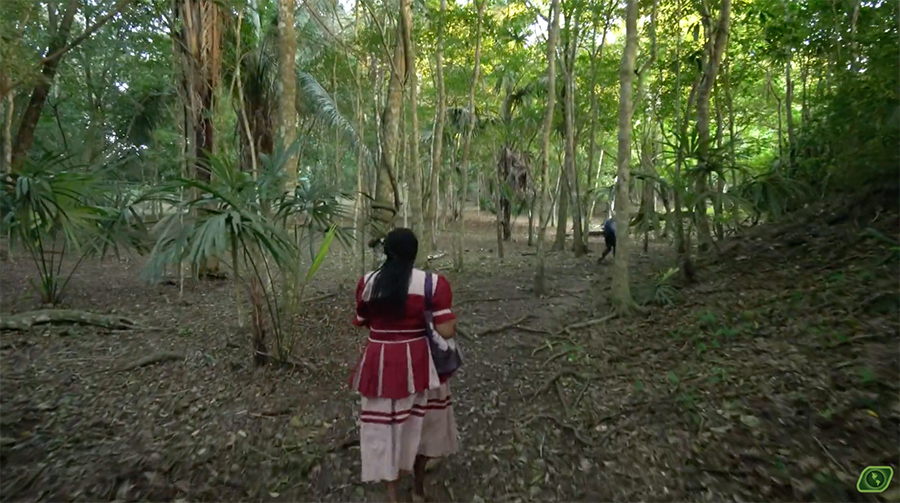“The Maya and their ancestors developed an incredibly sophisticated, sustainable agricultural system over hundreds of generations of accumulated knowledge. The Milpa Cycle is still being practiced by a handful of traditional Maya farmers today.”
Learn about The Maya Milpa Cycle, a Mayan forest gardening technique that edits and works with nature for food and resource production. In the video above, filmmaker Richard Kern talks with Mayan farmers Alfonso Tzul and Narciso Torres about the sustainable agroforesty approach.
He also talks with Lacandon Maya farmer Victor Chambord in Chiapas, Mexico, and archaeologist Dr. Anabel Ford, whose study of Mesoamerica led her to find the ancient Maya city El Pilar on the border of Belize and Guatemala.
Ford and her team identified the trees and plants in the surrounding areas as an ancient forest garden, developing a conservation strategy to keep nature protected around ancient monuments.
How does the Maya Milpa Cycle work? From the video:
In preparation for planting, the milpa farmer cuts and burns a piece of his forest. Fire is a necessary part of the cycle that returns microelements to the soil in the form of charcoal.
Next, the farmer plants corn seeds among the tree stumps, and among the corn plants, he sews beans, squash, and as many as 90 other kinds of annual crop plants. He does this for about four years and no plow touches his soil.
Master farmer Narciso Torres uses only a sharp pole, and because Narciso’s soil is not plowed, it never washes away when it rains. Furthermore, the milpa farmer uses no chemical fertilizers, pesticides, or herbicides. Nearby, streams run clear and unpolluted.
“To the untrained eye the milpa doesn’t look clean and organized in the way of Western monoculture, ‘but in fact,'” explains Ford, “‘it’s retaining water, building fertility, biodiversity of the soil, it has the worms and the charcoal. All those things are right in there and they’re kept there.'”
The film was created for Odyssey Earth, a video series created for their Encounters in Excellence school auditorium lectures. The team behind the films, Kern and his parents, biologist and teacher Judy Kern and wildlife filmmaker Rich Kern, present and answer questions about the films during their Florida-based school assemblies.
Find Odysssey Earth on YouTube and Instagram.
Learn more about forest gardening at Dr. Anabel Ford’s ExploringSolutionsPast.org.
Watch these related videos next on TKSST:
• Growing 500 edible plants in a forest
• How Can Farms and Forests Coexist?
• Chief Oshkosh and a history of Menominee Forest conservation
• Hopi Dryland Farming: Growing corn with rainfall in the desert
• The ancient Mayan tradition of chocolate making
Curated, kid-friendly, independently-published. Support this mission by becoming a sustaining member today.






